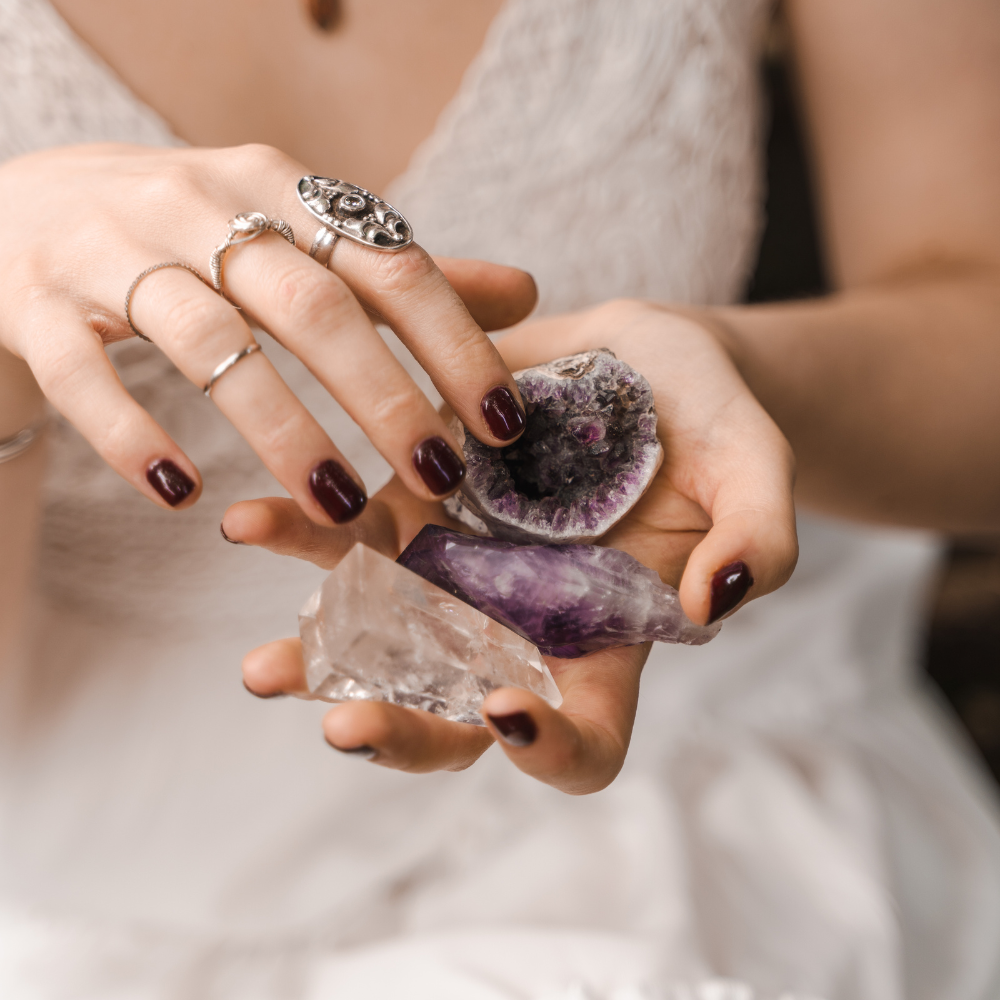
The Fascinating World of Crystals
Crystals have captivated humans for centuries, embodying a unique blend of natural beauty, scientific intrigue, and metaphysical allure.
From the dazzling Amethyst to the versatile Quartz, these mineral marvels are more than just pretty stones—they’re windows into the Earth’s history, tools for technology, and even symbols of personal growth and healing.
In this blog post, we’ll explore the multifaceted nature of crystals, delving into their formation, their applications in various fields, and the beliefs that surround them.
How Crystals Form: The Science Behind the Sparkle
Crystals are solids with atoms arranged in highly ordered, repeating patterns. This structured arrangement is what gives them their characteristic shapes, such as cubes, hexagons, or pyramids. But how do these geometric wonders come into being?
Crystals form when a liquid cools and solidifies, or when a solution becomes oversaturated with dissolved minerals. For example:
-
Quartz forms from cooling magma or through the slow crystallization of silica-rich solutions.
-
Salt crystals emerge as water evaporates, leaving behind solid sodium chloride.
The conditions of formation—temperature, pressure, and the presence of certain elements—determine a crystal’s shape, size, and color.
Crystals in Everyday Life: Beyond Aesthetics
Crystals are more than decorative objects; they play a crucial role in technology and industry. Here are a few examples:
-
Quartz in electronics: Quartz crystals are used in watches, computers, and radios due to their ability to vibrate at precise frequencies.
-
Diamonds in tools: The unparalleled hardness of diamonds makes them ideal for cutting and drilling.
-
Salt and sugar crystals: Even the crystals we consume daily are essential to life and cuisine.
Crystals also inspire innovation in science, with synthetic crystals being used in everything from laser technology to solar panels.
The Metaphysical Connection: Crystals and Energy
For many, crystals are more than physical objects—they are vessels of energy and intention. Ancient cultures, from the Egyptians to the Chinese, have attributed healing and spiritual properties to crystals. Today, people use them in meditation, energy work, and holistic healing practices.
Popular beliefs about crystals include:
-
Amethyst: Known as a calming stone, it’s said to enhance clarity and reduce stress.
-
Citrine: Often associated with abundance and creativity, this sunny crystal is thought to attract positive energy.
-
Rose Quartz: Dubbed the “stone of love,” it’s believed to promote self-love and harmonious relationships.
While scientific evidence for these claims is limited, many find comfort and inspiration in the symbolic meanings of crystals.
Choosing and Caring for Your Crystals
If you’re drawn to crystals, selecting the right one can be a deeply personal process. Some people choose based on their intuitive feelings, while others research the properties associated with each stone.
To care for your crystals:
-
Cleanse them regularly, either by rinsing under water (check if the crystal is water-safe) or using methods like smudging with sage.
-
Store them in a safe place, away from extreme temperatures or direct sunlight, which can fade certain stones.
Conclusion: A Timeless Fascination
Crystals bridge the gap between the tangible and the mystical. Whether you admire their scientific properties, appreciate their aesthetic value, or use them in spiritual practices, they offer a unique way to connect with the natural world.
So next time you hold a crystal, take a moment to marvel at its journey—from deep within the Earth to your hand—and the countless ways it can enrich your life.
 is here! Shop now, pay later in 4 easy installments
is here! Shop now, pay later in 4 easy installments
